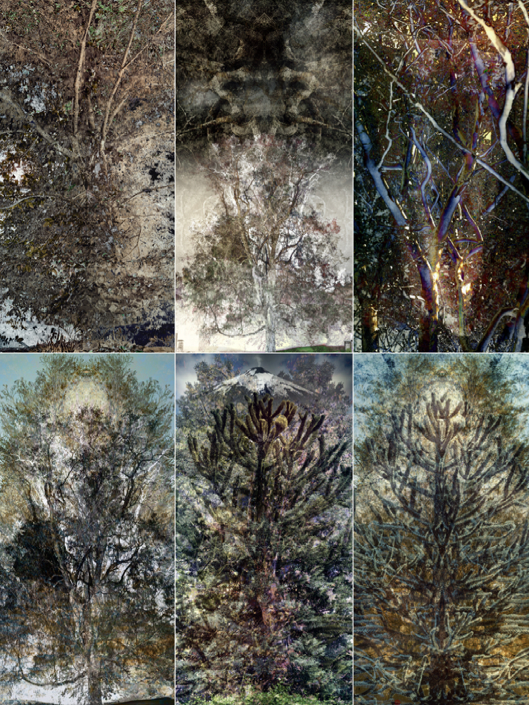

Title: Huilquilemu Series Digital Art By Artist Alexander Sutulov
Shipping: $50.00
Artist: N/A
Period: Contemporary
History: N/A
Origin: N/A
Condition: Museum Quality
Item Date: 2007
Item ID: 1915
Study III / West Section / Huilquilemu Series / Digital Art Artist Alexander Sutulov: Huilquilemu, Mapuche word derived from wilki: thrush and lemu: forest; is part of Borderland Chile iconography where the general theme is centred in Chilean landscape morphology as a vehicle of understanding from an organic point of view, the "exoticism" of the new world which was originally described by German naturalist, Alexander von Humboldt and romantic painter Johann Moritz Rugendas in the 19th century. The images in reference relate to southern Chile native trees such as the Chilean Oak, Arrayán, Araucaria and Coihue have been purposely intertwined in order to insinuate silhouette pattern landmarks which have been dominating until present time. Although substantial changes have taken place since 19th century exploration, a sense of nostalgia lingers to a unique emplacement which identifies a particular and remote geography. In addition to native flora, the overall composition has been embellished by outstanding sites which define the singularity of an overt volcanic landscape represented by the "Villarrica" active volcano and dramatic waterfalls such as the "Lions Falls" in the nearby rain forest. From a formal point of view, the crossroads created between traditional continuous tone printmaking and second generation digital painting brings about the pinnacle of graphic language which coincidentally in these specific compositions is represented by panicle flower-like clusters where movement and line are constantly regenerating.
Link: http://en.wikipedia.org/wiki/Landscape_art
Landscape art depicts the surface of the earth, but there are other sorts of landscapes, such as moonscapes. The word landscape is from the Dutch, landschap meaning a sheaf, a patch of cultivated ground. The word entered the English vocabulary of the connoisseur in the late 17th century. The Chinese tradition of "pure" landscape, in which the minute human figure simply gives scale and invites the viewer to participate in the experience, was well established by the time the oldest surviving ink paintings were executed. Landscape painting was the "chief artistic creation of the nineteenth century", with the result that in the following period people were "apt to assume that the appreciation of natural beauty and the painting of landscape is a normal and enduring part of our spiritual activity. Landscape observations ranging from highly accurate and scientific to outlandish or fantastic. These observations are documented in the landscape artworks they produced. Landscape art and landscape painting was manifest in more purely formal terms, such as color, freed from objective context, and a reduction of form to basic geometric designs. Painting is a mode of expression, and the forms are numerous. Drawing, composition or abstraction and other aesthetics may serve to manifest the expressive and conceptual intention of the practitioner. Paintings can be naturalistic and representational (as in a still life or landscape painting.